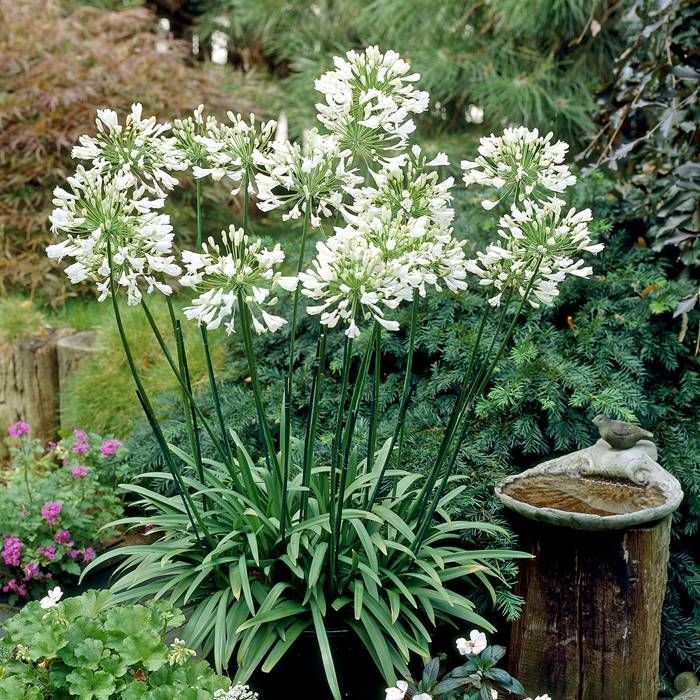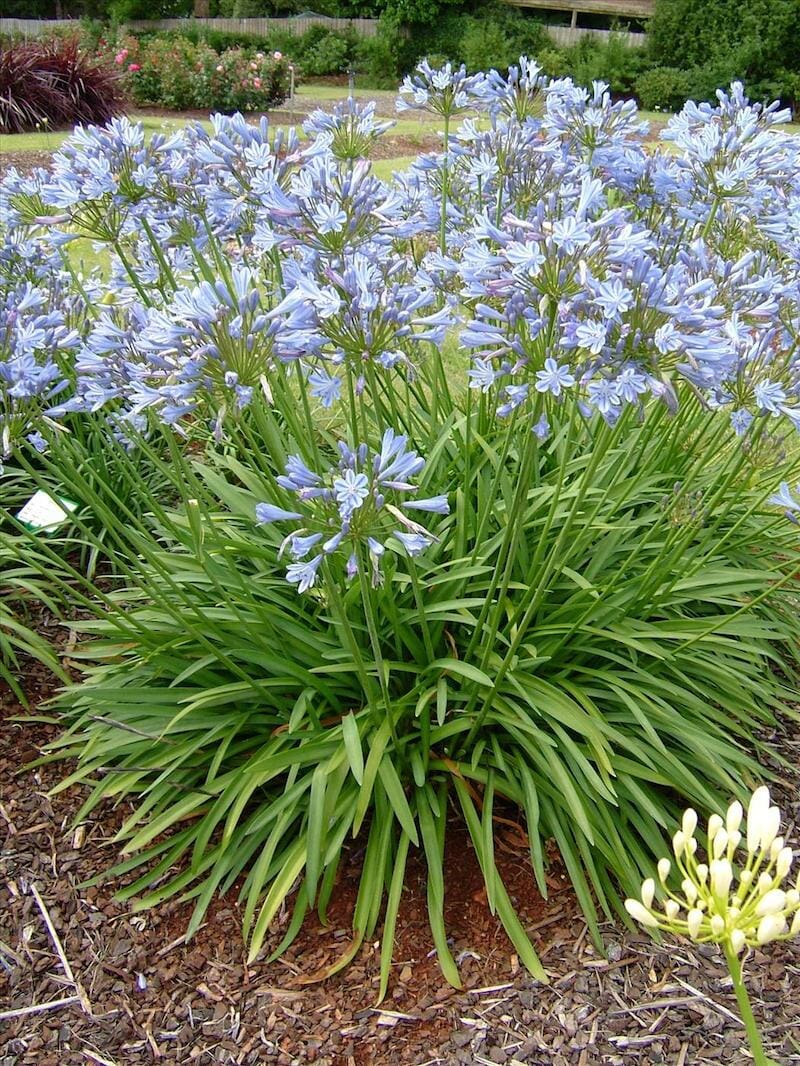Agapanthus Treatment Tips for Lush and Vibrant Flowers
Agapanthus Treatment Tips for Lush and Vibrant Flowers
Blog Article
Letting Loose the Secret to Effective Agapanthus Cultivation: Idea for a Flourishing Yard
In the realm of horticulture, growing agapanthus efficiently requires a tactical method that includes different aspects of plant care. With cautious focus to information, one can unlock the keys to nurturing these spectacular flowers, bring about a garden that prospers with charm and vibrancy. By recognizing the nuances of agapanthus farming, one can develop an atmosphere where these plants prosper and bloom abundantly. In the following discussion, we will certainly check out important tips and methods that will direct you in the direction of a thriving agapanthus garden, supplying understandings right into best techniques, dirt conditions, sprinkling techniques, and more.
Growing Agapanthus: Ideal Practices
When growing Agapanthus, appropriate dirt prep work is vital for making certain successful growth and growth of these gorgeous blossoms. Agapanthus, frequently known as Lily of the Nile or African lily, prospers in well-draining soil with a slightly acidic to neutral pH level - Agapanthus. Before growing, it is critical to modify heavy clay dirts with raw material such as compost or peat moss to boost drainage and offer vital nutrients for the plants
To grow Agapanthus, select a place that gets full sunlight to partial color, as this will advertise healthy and balanced growth and plentiful flowering. Dig a hole two times the size of the plant's root round and position the Agapanthus at the very same deepness it was previously growing. Delicately backfill the hole with dirt, pushing down firmly to get rid of any type of air pockets around the origins.
Water the freshly grown Agapanthus thoroughly and continue to keep the dirt uniformly damp, especially throughout the plant's active growing season. Agapanthus. Applying a balanced fertilizer once a month can further sustain the plant's growth and blooming. By following these best techniques for growing Agapanthus, you can produce a spectacular display screen of these fascinating flowers in your yard
Ideal Soil Issues for Agapanthus
For ideal growth and flowering success of Agapanthus plants, making certain the dirt problems are excellent is vital. Agapanthus flourishes in well-draining soil with a somewhat acidic to neutral pH degree ranging from 6.0 to 7.0. This kind of soil permits sufficient water drain, protecting against waterlogging which can bring about root rot. To boost soil drain, take into consideration including natural issue such as garden compost or peat moss when preparing the growing site. Additionally, Agapanthus likes soil that is rich in nutrients, so including a well balanced fertilizer during the growing period can promote healthy and balanced development and lively blossoms.

Watering and Feeding Tips
To make sure healthy development and lively blossoms, proper watering and feeding methods are essential for effective Agapanthus cultivation. Agapanthus plants gain from routine watering, especially throughout the expanding season. It is their explanation recommended to water deeply once a week, making certain the dirt is damp but not saturated. During warm weather condition or in pots, more frequent watering might be necessary to avoid the soil from drying out entirely.
When it pertains to fertilizing Agapanthus, a balanced plant food with equivalent parts nitrogen, phosphorus, and potassium can be applied in the spring to promote healthy and balanced growth and blooming. Slow-release fertilizers are ideal for providing nutrients slowly over an extensive duration. Prevent over-fertilizing, as this can result in extreme foliage growth at the cost of blossoms.
Additionally, including raw material like compost right into the soil can improve nutrient levels and improve dirt structure, aiding in the total health of the Agapanthus plants. By complying with these watering and fertilizing pointers, gardeners can ensure their Agapanthus plants flourish and produce stunning display screens of blossoms.
Trimming and Deadheading Techniques
Correct pruning and deadheading strategies play an important function in maintaining the health and aesthetics of Agapanthus plants, complementing the essential techniques of watering and fertilizing for successful cultivation. Pruning Agapanthus includes removing invested flower heads, yellowing or dead fallen leaves, and total shaping of the plant to promote far better growth. Deadheading, the procedure of getting rid of faded flowers, not just improves the plant's look however likewise motivates further growing.
When deadheading Agapanthus, it is a good idea to clip off the blossom stem at the base using sharp, clean shears. This procedure redirects the plant's energy from seed production back into root and vegetation growth, advertising a much healthier and extra durable plant. Routine deadheading can extend the flowering period of Agapanthus and prevent self-seeding, which can see here bring about congestion.
In terms of pruning, Agapanthus generally take advantage of a light trim after blooming to tidy up the plant and motivate fresh growth. Cutting down the invested flower stems and removing any type of damaged or dead foliage helps keep the plant's vitality and overall appearance. Nevertheless, it is vital to prevent reducing right into the crown of the plant, as this can damage its health and wellness.

Protecting Agapanthus From Pests and Diseases
Carrying out effective bug and condition monitoring methods is essential to securing the wellness and vitality of Agapanthus plants in growing. Agapanthus are generally hardy plants, however they can still succumb to various bugs and diseases if not effectively taken care of. One typical insect that affects Agapanthus is the Agapanthus borer, a caterpillar that passages into the plant, triggering damages to the fallen leaves and blossoms. To stop problems, regular examination of the plants is vital. If borers are spotted, they can be by hand removed, or insecticidal soap can be made use of as a control step.
In addition to bugs, Agapanthus are vulnerable to illness such as origin rot and fungal leaf places. These concerns can typically be prevented by making certain correct water drainage and preventing overwatering. If indications of illness appear, influenced components of the plant need to be without delay removed to avoid further spread. Fungicides may likewise be used as a treatment measure, complying with the producer's guidelines carefully. By staying alert and attending to parasite and condition issues quickly, gardeners can aid their Agapanthus prosper and grow.
:max_bytes(150000):strip_icc()/agapanthus-growing-guide-7368912_04-66a3f4cf245b4332b28954dd37c784f5.jpg)
Final Thought
Finally, successful growing of agapanthus calls for correct planting strategies, excellent dirt problems, sufficient watering and fertilizing, routine pruning and deadheading, and security from bugs and conditions. By adhering to these methods and suggestions, garden enthusiasts can ensure a prospering garden full of attractive agapanthus blooms. Agapanthus. Remember to maintain regular treatment and attention to detail to advertise the health and long life of these magnificent plants
When growing Agapanthus, proper dirt preparation is essential for making certain successful hop over to these guys development and growth of these attractive flowers.Water the newly grown Agapanthus thoroughly and proceed to maintain the dirt equally wet, particularly during the plant's energetic expanding period.For optimum development and growing success of Agapanthus plants, making certain the soil conditions are perfect is important. When planting or transplanting Agapanthus, make certain the dirt is well-prepared to give the needed foundation for the plants to develop themselves efficiently. One common pest that influences Agapanthus is the Agapanthus borer, a caterpillar that passages right into the plant, creating damage to the fallen leaves and flowers.
Report this page